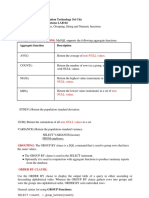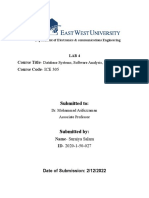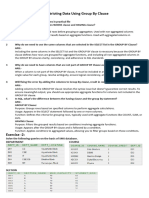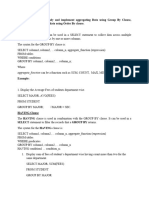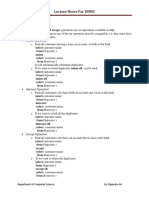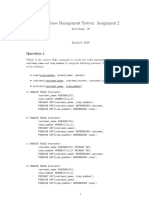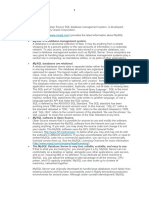0% found this document useful (0 votes)
7 views3 pagesDBMS Lab4
The document provides an overview of aggregate functions in MySQL, including AVG, COUNT, MAX, MIN, STDEV, SUM, and VARIANCE, along with their descriptions. It explains the use of the GROUP BY clause for grouping rows and the ORDER BY clause for sorting query results. Additionally, it includes exercises for creating database tables and performing various SQL queries related to customer loans and account balances.
Uploaded by
adityaarun.n24Copyright
© © All Rights Reserved
We take content rights seriously. If you suspect this is your content, claim it here.
Available Formats
Download as PDF, TXT or read online on Scribd
0% found this document useful (0 votes)
7 views3 pagesDBMS Lab4
The document provides an overview of aggregate functions in MySQL, including AVG, COUNT, MAX, MIN, STDEV, SUM, and VARIANCE, along with their descriptions. It explains the use of the GROUP BY clause for grouping rows and the ORDER BY clause for sorting query results. Additionally, it includes exercises for creating database tables and performing various SQL queries related to customer loans and account balances.
Uploaded by
adityaarun.n24Copyright
© © All Rights Reserved
We take content rights seriously. If you suspect this is your content, claim it here.
Available Formats
Download as PDF, TXT or read online on Scribd
/ 3
